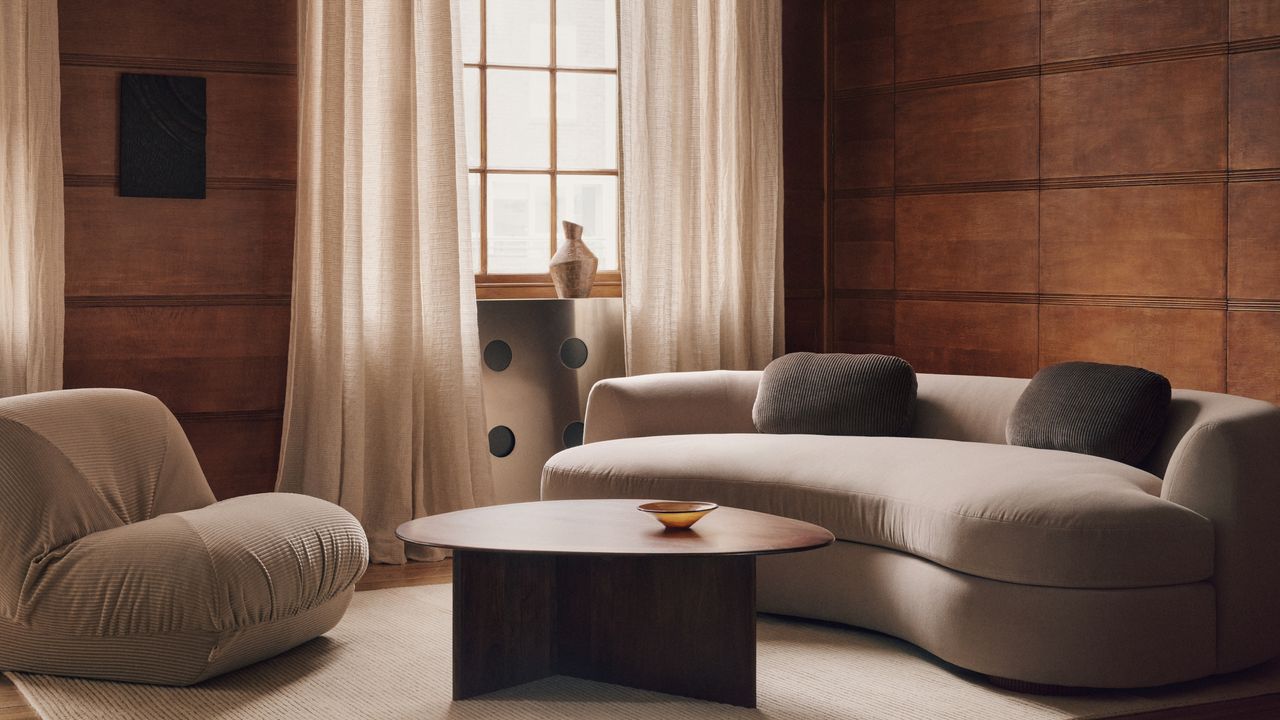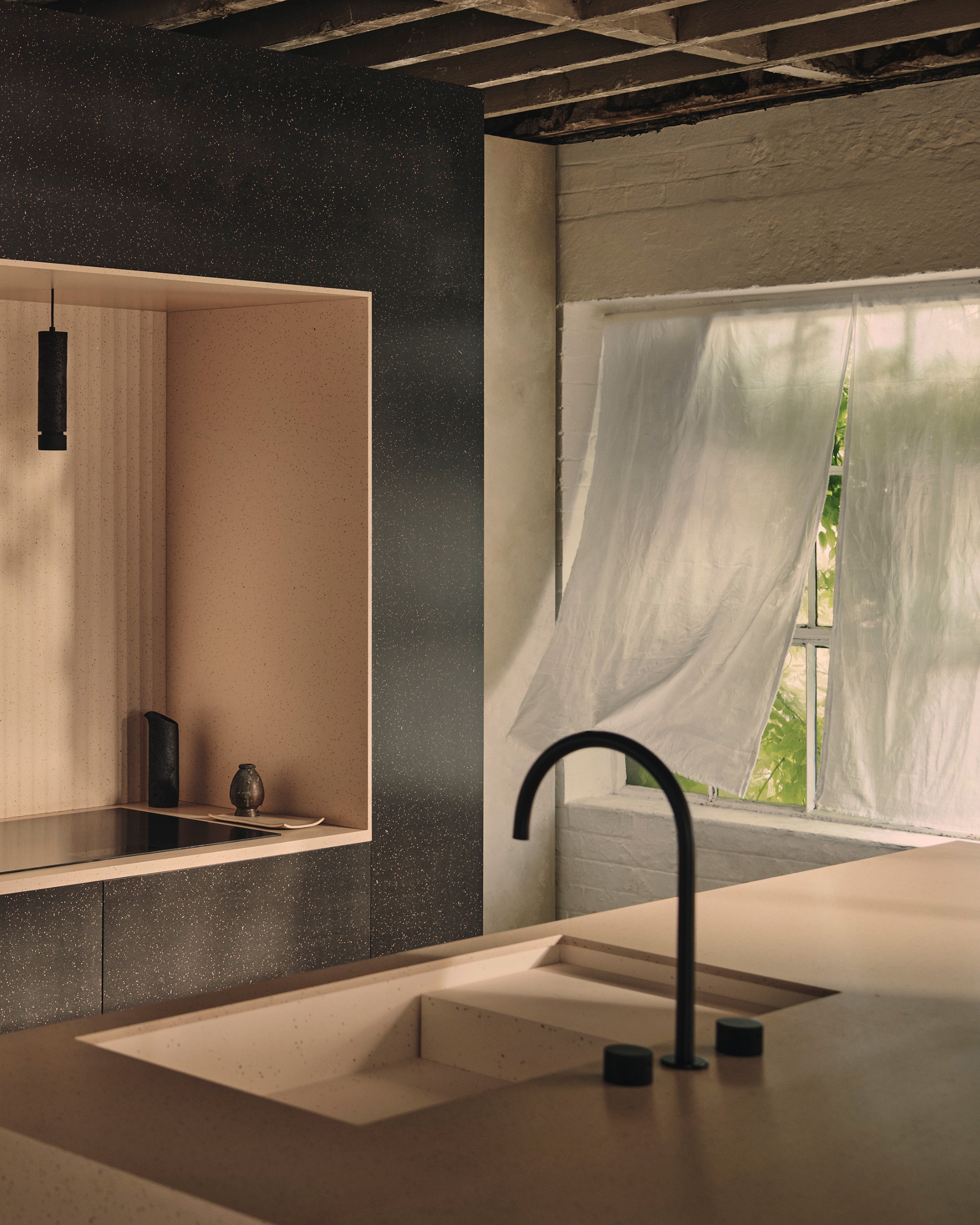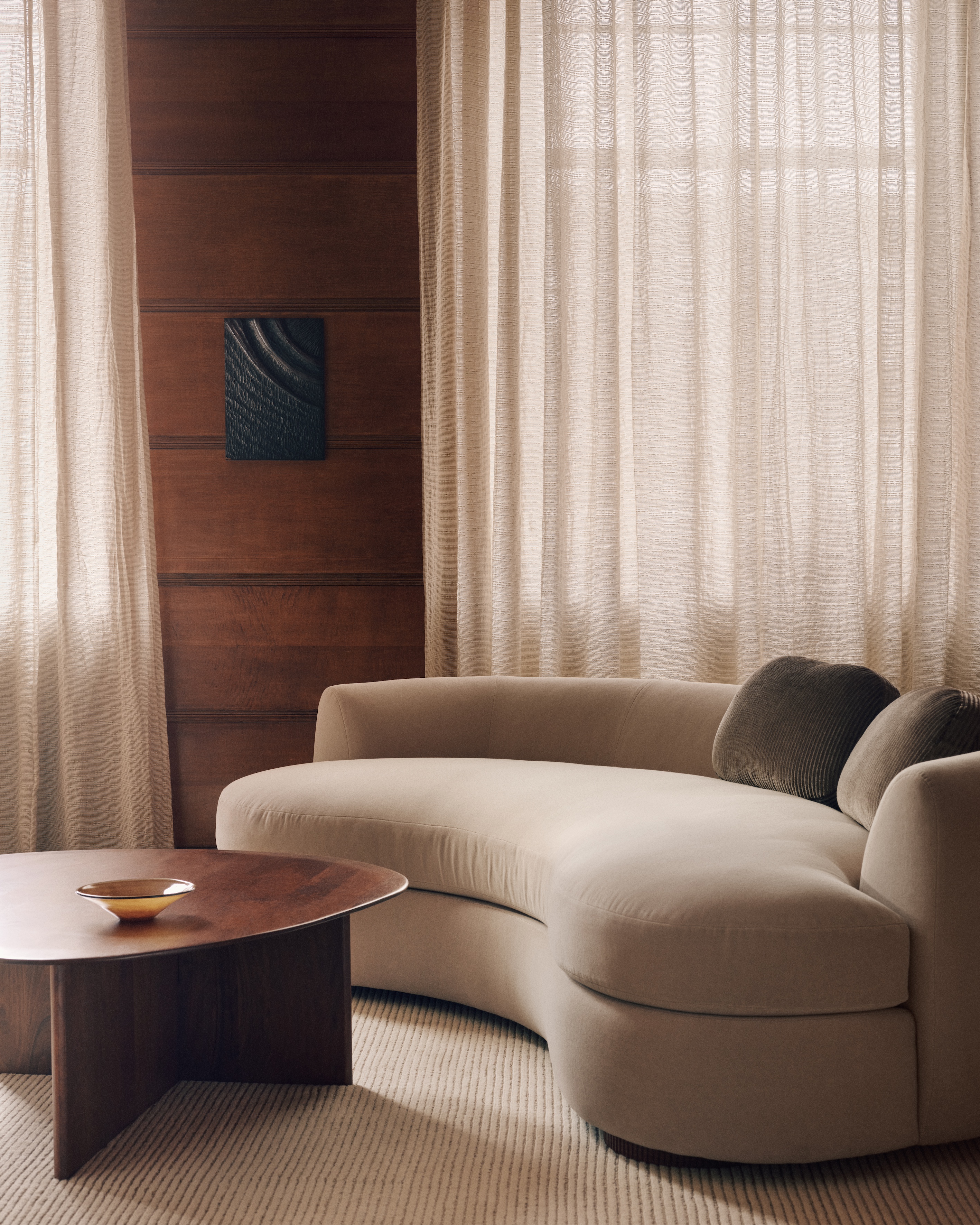
With a maximalist aesthetic and eclectically curated spaces making a comeback, leaving your windows bare is no longer an option. Tacking on a textile instantly warms your room and brings life to even the smallest corners. But elevating your window's wardrobe doesn't have to mean dressing them in pooling, thick velvet — sleek wabi-sabi curtains bring definition without the fuss.
True to the wabi-sabi aesthetic, this style of curtain manifests in rustic fabrics, like linen and cotton, and embraces imperfection with exposed, even fraying edges and natural, textured materials. "I don’t think of it as a strict curtain trend so much as a shift in attitude when it comes to decorating," explains designer James Gomez, creative director of Yarn Collective. "People are looking for interiors that feel authentic and calm, and fabrics play a big part in that."
When a curtain is left unlined or is finished with a raw edge, it becomes more sensory, creating an atmosphere that celebrates natural texture and the beauty of imperfections. Here's how designers and upholstery experts are using wabi-sabi curtains in homes today.
What Are Wabi-Sabi Curtains?

At its core, wabi-sabi is a Japanese design principle that embraces imperfect beauty, celebrating natural materials, weathered textures, patina, and simple, humble design.
Translated through curtains, London-based upholstery and curtain expert, Pat Giddens, says it looks like "raw or loosely woven fabrics — think handloomed linen, hemp, cotton gauze, muslin, vintage fabrics, velvets, reusing old velvets, antique linen grain sacks, antique laces and trims, or globally sourced textiles, mixing stripes or clashing patterns."
However, it's more than just choosing a minimalist materials. "For me, it’s about the honesty of materials and how they respond to light and use over time," says James Gomez.
Rather than being concerned with perfection, it's more about texture, tone, and how the fabric moves and falls. The key lies in texture and tactility: natural fibers like loosely woven linens or slubbed cotton or fabrics with an irregular weave that soften and age beautifully over time.
As people crave calm in a digitally saturated world, "they're turning to texture and tactility," says Pat. "Wabi-Sabi curtains introduce softness and quiet irregularity that soothe rather than stimulate."
While minimalism in interior design is still present, its colder, more clinical edges are being softened. "Wabi-sabi brings emotional warmth without clutter," adds Pat.
How to Use Wabi-Sabi Curtains in Your Home

The best way to style wabi-sabi curtains is by keeping the authenticity and calming nature of wabi-sabi principles at the heart of the design — that includes everything from the color and design style, to how you hang the curtains, and more.
To start, James says, "It works well wherever natural light is part of the design story." A sheerer curtain or looser weave allows light to shine through while softening the harsh glare when there's too much natural light in a room.
Though wabi-sabi curtains have an obvious role in minimalist settings, James adds, "They beautifully complement homes with inherent character. In fact, in any style of home, from layered and lived-in to modern and pared-back, this approach softens the edges and introduces warmth and ease."
In terms of color, keep the palette grounded in nature. Think hues like chalk, flax, ochre, and soft grays. From there, "Mix subtle tonal variations rather than stark contrasts," says James. You can have a bit of fun with how you layer and choose a color scheme that matches your interior, but just ensure that comfort and serenity are at the core.

When hanging wabi-sabi curtains, "I like curtains that pool slightly on the floor; it gives them a relaxed presence and allows the fabric to drape as it wants to," says James.
And choosing the right curtain rails and hardware for your wabi-sabi curtains is important, too. "Use minimal hardware — or go deliberately raw," recommends Pat. Look for pieces like wood or iron rods with visible patina, tope, driftwood, or even consider natural branches as curtain rods. And don't forget your curtain's finishing touches. "Clip rings or hand-tied tabs are best for emphasizing the casual look," says Pat.
Finally, pair your curtains with natural woods, plaster walls, handmade ceramics, or textured upholstery, pieces that share the same sense of integrity and touch.
A pro tip to keep in mind is that the simplicity of wabi-sabi curtains is deceptive. "The success of this style relies on proportion, drape, and fiber choice," says James. Where natural fabrics with body and texture thrive, synthetics tend to fall flat.
"It should never look careless; the beauty lies in the balance between ease and consideration," says James.
The beauty of wabi-sabi curtains lies in the casual comfort that they provide — instantly elevating a space. From there, you can try decorating with sheer curtains in more unexpected and design-forward ways.







